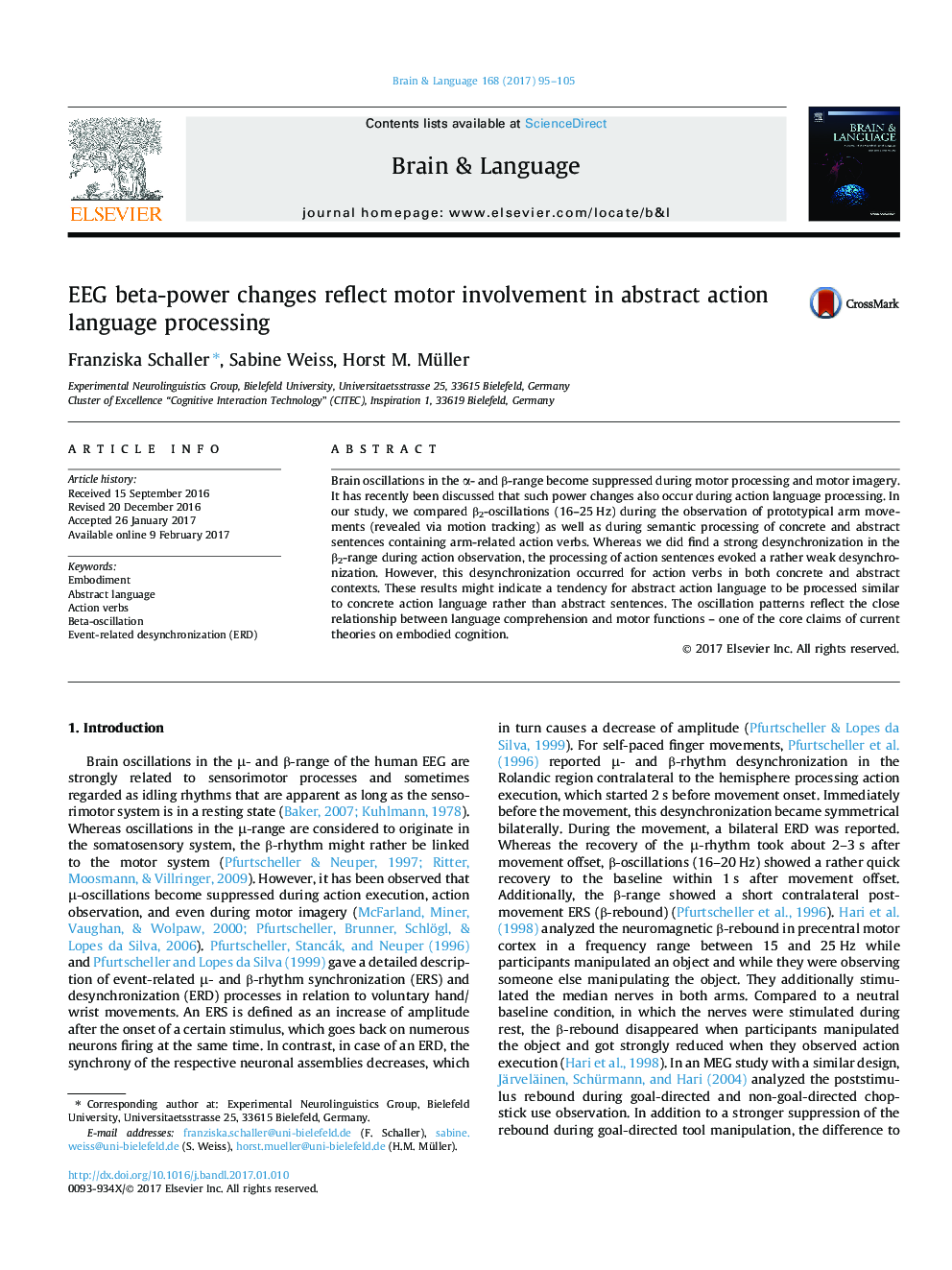| Article ID | Journal | Published Year | Pages | File Type |
|---|---|---|---|---|
| 5041354 | Brain and Language | 2017 | 11 Pages |
â¢Analysis of β2-power during prototypical movements and abstract action language.â¢Î²2-ERD during action observation vs. language processing is only partially similar.â¢Î²2-ERD during abstract vs. concrete action language processing is comparable.
Brain oscillations in the α- and β-range become suppressed during motor processing and motor imagery. It has recently been discussed that such power changes also occur during action language processing. In our study, we compared β2-oscillations (16-25 Hz) during the observation of prototypical arm movements (revealed via motion tracking) as well as during semantic processing of concrete and abstract sentences containing arm-related action verbs. Whereas we did find a strong desynchronization in the β2-range during action observation, the processing of action sentences evoked a rather weak desynchronization. However, this desynchronization occurred for action verbs in both concrete and abstract contexts. These results might indicate a tendency for abstract action language to be processed similar to concrete action language rather than abstract sentences. The oscillation patterns reflect the close relationship between language comprehension and motor functions - one of the core claims of current theories on embodied cognition.
